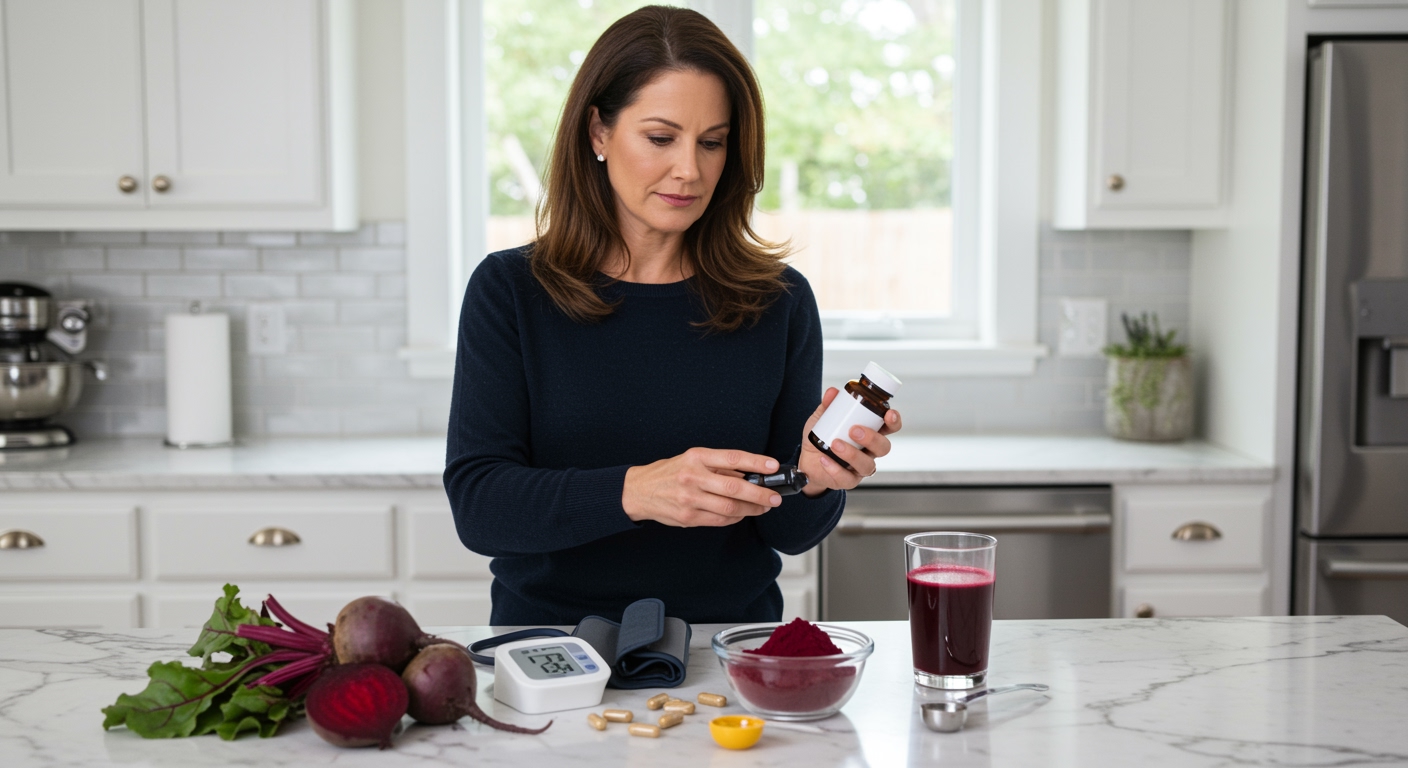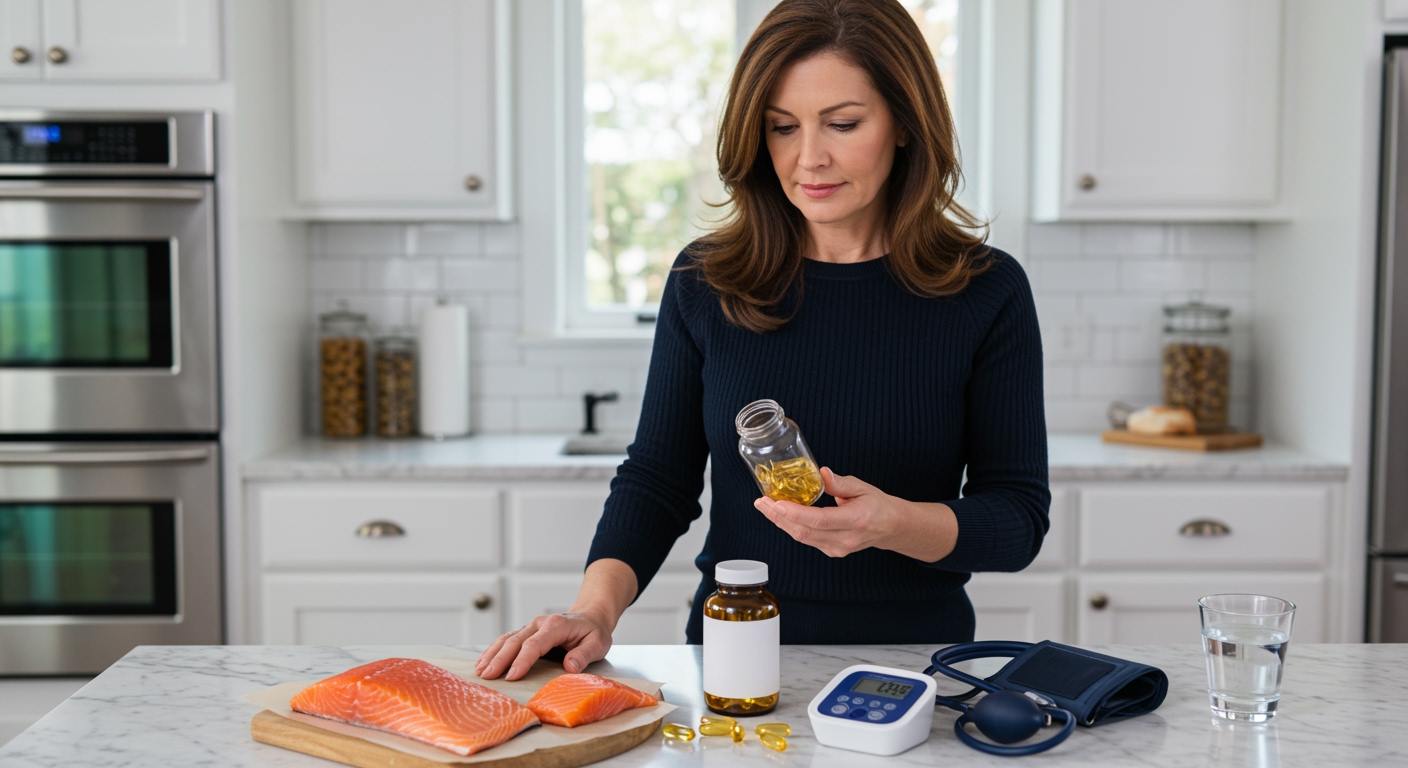✪ Key Takeaway: Radishes can support blood pressure control through potassium content and natural nitrates that promote healthy circulation.
Introduction
Your doctor mentions blood pressure again during your checkup and suggests dietary changes.
You might be wondering if simple vegetables like radishes could actually make a difference in managing your numbers naturally.
Hi, I’m Abdur, your nutrition coach and today I’m going to explain how radishes can genuinely support your blood pressure management goals through their unique nutritional profile.
What Makes Radishes Special For Blood Pressure?
Radishes contain potassium, a mineral that directly counteracts sodium’s blood pressure-raising effects in your body.
One cup of sliced radishes provides about 270 milligrams of potassium, which helps your kidneys eliminate excess sodium through urine.
The natural nitrates in radishes convert to nitric oxide in your bloodstream, causing blood vessels to relax and widen.
This vasodilation process reduces the pressure your heart needs to pump blood throughout your circulatory system.
Radishes also contain fiber that supports healthy cholesterol levels, indirectly benefiting cardiovascular function.
The combination of these compounds creates a synergistic effect that supports overall heart health beyond just blood pressure numbers.
✪ Fact: Radishes belong to the cruciferous vegetable family, known for cardiovascular protective compounds.
How Much Potassium Do You Actually Need?
The American Heart Association recommends 3,500 to 5,000 milligrams of potassium daily for optimal blood pressure management.
Most people consume only about 2,300 milligrams daily, creating a significant gap that contributes to hypertension risk.
While radishes alone cannot meet your entire potassium needs, they contribute meaningfully when combined with other potassium-rich foods.
Your body maintains a delicate sodium-potassium balance that directly affects blood pressure regulation.
When potassium intake increases, your kidneys become more efficient at excreting sodium, naturally lowering blood pressure.
This mechanism works particularly well when you simultaneously reduce processed food consumption, which tends to be high in sodium.
✪ Pro Tip: Track your potassium intake for one week to identify gaps in your current diet.
Do Nitrates In Radishes Really Work?
Research shows that dietary nitrates can reduce systolic blood pressure by 4-10 mmHg within hours of consumption.
Your body converts nitrates to nitric oxide through a process involving beneficial bacteria in your mouth and stomach.
This nitric oxide acts as a powerful vasodilator, signaling smooth muscle cells in blood vessel walls to relax.
The effect typically peaks 2-3 hours after eating nitrate-rich foods and can last up to 8 hours.
Radishes contain moderate amounts of nitrates compared to beetroot or leafy greens, but they still contribute to your daily intake.
The key advantage of getting nitrates from whole foods like radishes is the absence of harmful preservatives found in processed meats.
✪ Note: Avoid using mouthwash immediately before eating nitrate-rich foods as it kills beneficial bacteria.
What About Radish Greens And Leaves?
Radish greens contain even higher concentrations of potassium and nitrates than the root itself.
These leafy tops provide approximately 400 milligrams of potassium per cup, making them particularly valuable for blood pressure management.
The greens also contain magnesium, another mineral that supports healthy blood pressure by promoting muscle relaxation.
Many people discard radish greens, missing out on their superior nutritional profile compared to the root.
You can sauté radish greens with garlic, add them to smoothies, or include them in salads for maximum benefit.
The combination of eating both the root and greens provides a more comprehensive approach to cardiovascular nutrition.
✪ Pro Tip: Choose radishes with fresh, vibrant greens attached for maximum nutritional value.
How Should You Include Radishes In Your Diet?
Start with half a cup of sliced radishes daily to gauge your tolerance and gradually increase the amount.
Raw radishes provide the highest concentration of active compounds since cooking can reduce nitrate content.
Add sliced radishes to salads, use them as crunchy snacks with hummus, or include them in vegetable juices.
Timing matters for blood pressure benefits, so consider eating radishes with your largest meal of the day.
Combine radishes with other potassium-rich foods like spinach, bananas, or avocados for synergistic effects.
Remember that consistency matters more than quantity when it comes to long-term blood pressure management through diet.
✪ Fact: Different radish varieties contain varying levels of beneficial compounds, with red radishes typically having the highest.
The Bottom Line
Radishes can genuinely support blood pressure management through their potassium content and natural nitrates that promote healthy circulation.
Small dietary changes create big health improvements when practiced consistently over time.
I would love to hear about your experience with radishes or any questions you might have about incorporating them into your blood pressure management plan in the comments below.
References
At NutritionCrown, we use quality and credible sources to ensure our content is accurate and trustworthy. Below are the sources referenced in creating this article:





